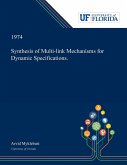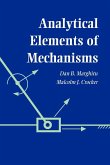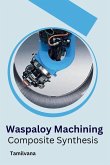MECHANISMS AND MACHINES: KINEMATICS, DYNAMICS, AND SYNTHESIS has been designed to serve as a core textbook for the mechanisms and machines course, targeting junior level mechanical engineering students. The book is written with the aim of providing a complete, yet concise, text that can be covered in a single-semester course. The primary goal of the text is to introduce students to the synthesis and analysis of planar mechanisms and machines, using a method well suited to computer programming, known as the Vector Loop Method. Author Michael Stanisic's approach of teaching synthesis first, and then going into analysis, will enable students to actually grasp the mathematics behind mechanism design. The book uses the vector loop method and kinematic coefficients throughout the text, and exhibits a seamless continuity in presentation that is a rare find in engineering texts. The multitude of examples in the book cover a large variety of problems and delineate an excellent problem solving methodology.

![Bundle: Mechanisms and Machines: Kinematics, Dynamics, and Synthesis + Mindtap Engineering 1-Semester Printed Access Card [With Access Code] - Stanisic, Michael M. Bundle: Mechanisms and Machines: Kinematics, Dynamics, and Synthesis + Mindtap Engineering 1-Semester Printed Access Card [With Access Code] - Stanisic, Michael M.](https://bilder.buecher.de/produkte/43/43342/43342447z.jpg)






